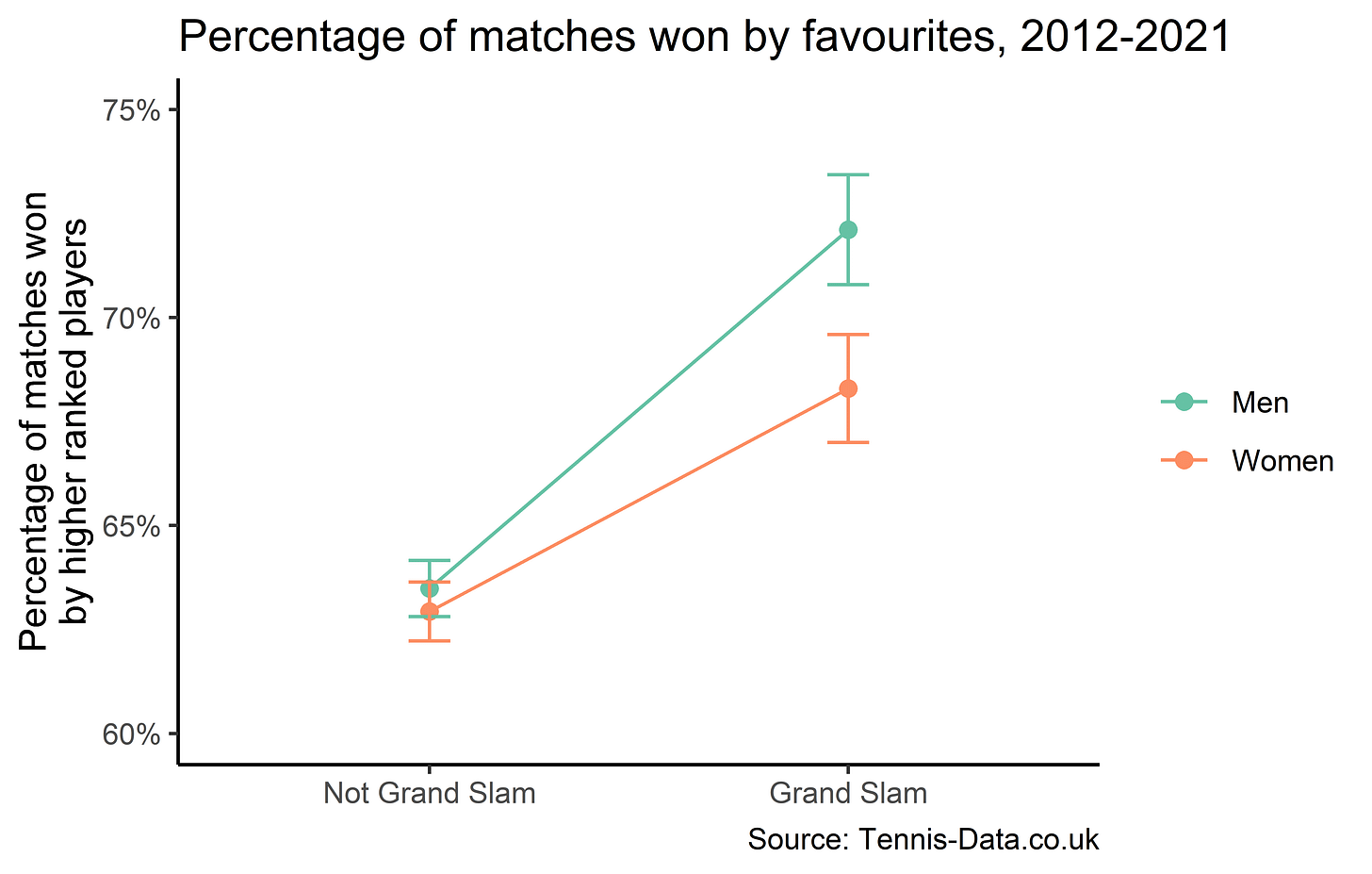Five sets for favourites
Emma Raducanu's grand slam success is a story for the ages, but could not be replicated in the men's game.
Three weeks ago, Emma Raducanu became the first player to win a grand slam having come through the qualifiers. She stormed through 10 games in the qualifier and main event on the way to the title, without losing a set along the way. It was a remarkable achievement and a huge upset but where does it rank relative to other historical sporting upsets?
I collected data on the odds of other sporting upsets, covering both tennis and other sports. Raducanu’s achievements rank fairly highly. Her highest quoted odds before the qualifier event were 400-1 and she reached 499-1 on the Betfair Exchange. Other bookies such as SkyBet had her considerably lower at 150-1, pre-qualifier. While she offered a great return on an early bet, she did not reach the astronomical odds of other sporting upsets such as Leicester’s premier league win in 2021.
There are also multiple female grand slam winners who had similarly low odds to her. Bartoli winning Wimbledon in 2013, Swiatek winning the French Open in 2019, Ostapenko winning the French Open in 2017. Raducanu is just the latest of female outsiders to win a grand slam. This partly explains why her odds were not as low as other outsiders. Oddsmakers anticipate the potential for outsiders to win grand slams and price it into the odds.
Tennis is set up for male superstars and female underdog stories but not vice versa
The men’s game does not show the same tendency. While Raducanu, ranked 150th in the world, battled through her final with Lailah Fernandez ranked 76, the men’s final was played between the Djokovic and Medvedev, the first and second seeds. The latest US Open reflects a longer running pattern. 83% of men’s grand slams in the last 10 years have been won by players ranked in the top five, whereas only 52% of women’s grand slams have been won by top five players.
Why are underdog champions so common in the women’s grand slams and not in the men’s competitions? Part of the explanation is the dominance of the top 3 in the men’s game. Federer, Djokovic and Nadal are tied on 20 grand slams, more than any other male tennis player. Having 3 players that talented at every grand slam makes it hard for an underdog to come through and win the title.
However, another important factor is the structure of the game. Men’s grand slam matches are best of five sets, while women’s are best of three. Best of three games are less predictable than best of five games, as a short-term dip in form for the favourite or boost for the underdog could decide the result. Over a five set game, favourites have more time to assert themselves.
We can see this in the data. In non-grand slam matches, where both women and men play best of three matches, higher ranked players tend to beat lower ranked players at a similar rate (63%) for men and for women. Higher ranked players win women’s grand slam matches at a slightly higher rate (68%). However, for men’s five set grand slam matches, favourites win an even higher 72% of matches. Of five set matches won by favourites, 8% of them would have been won by the lower seed over three sets. This difference might not seem huge, but over the course of a tournament, three sets matches would lead to much less predictable outcomes.
There is no question that Djokovic, Nadal and Federer are historically dominant players, but their impressive slam record has been aided by a format that helps favourites. And you must ask how many more titles could Serena Williams have won if she played five set matches?
Currently, tennis is set up for male superstars and female underdog stories but not vice versa. Many players have come out in favour of removing the disparity. Amelie Mauresmo has called for five set matches at women’s grand slams, while Djokovic has proposed moving to three set matches across all tournaments, citing tennis player’s full schedules. Either way, the unnecessary difference between the men’s and women’s game should be removed.


